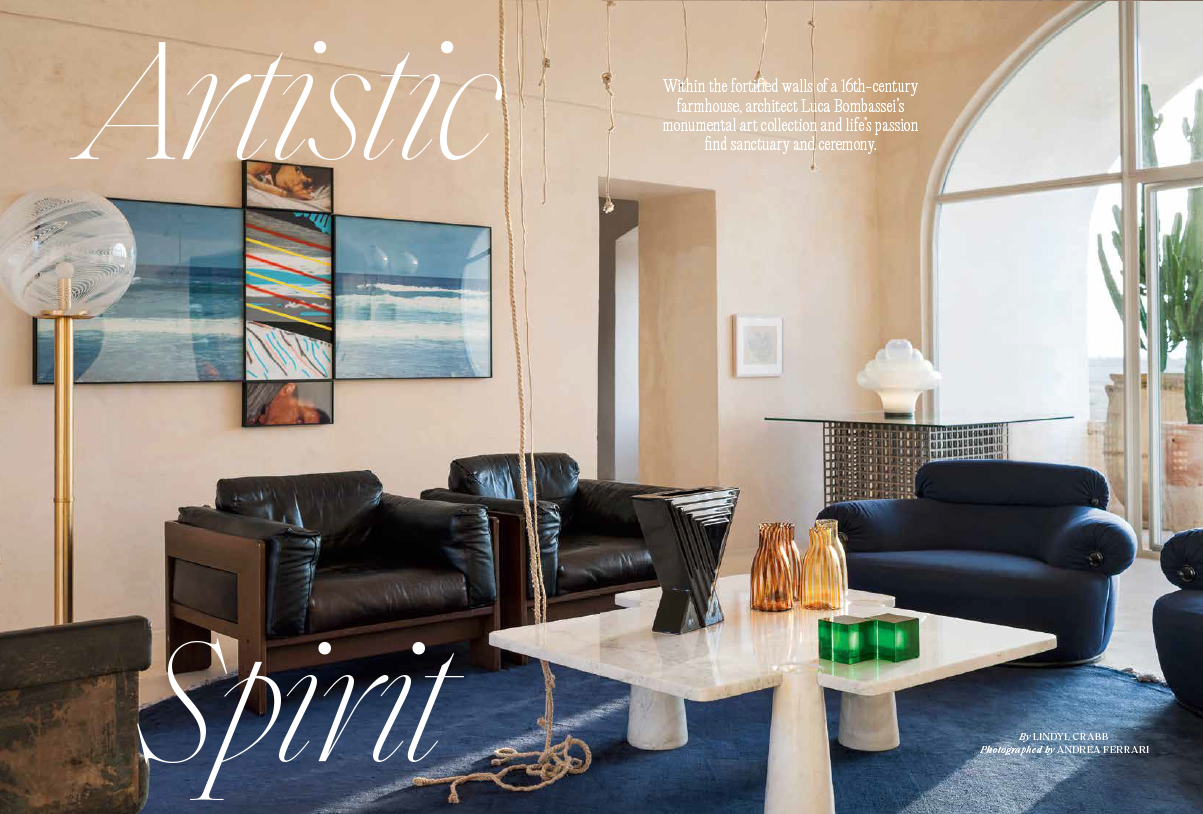
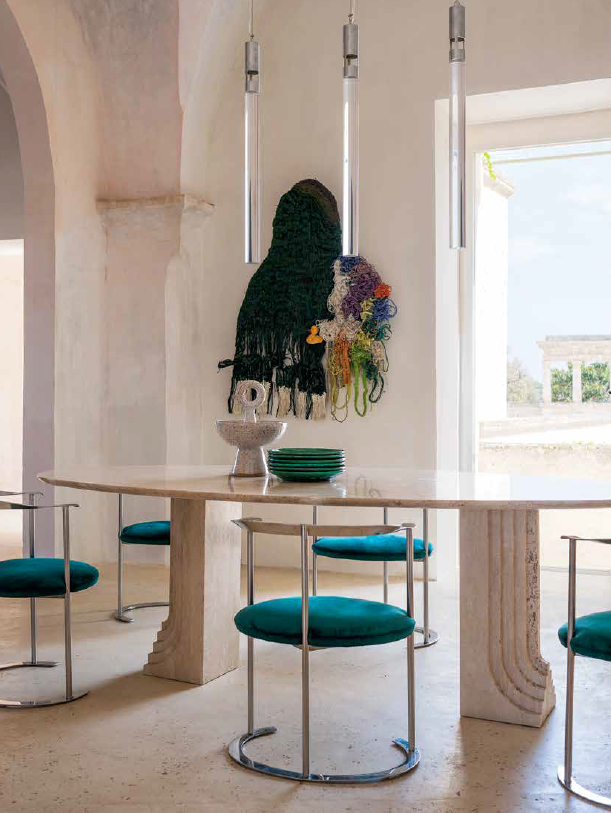
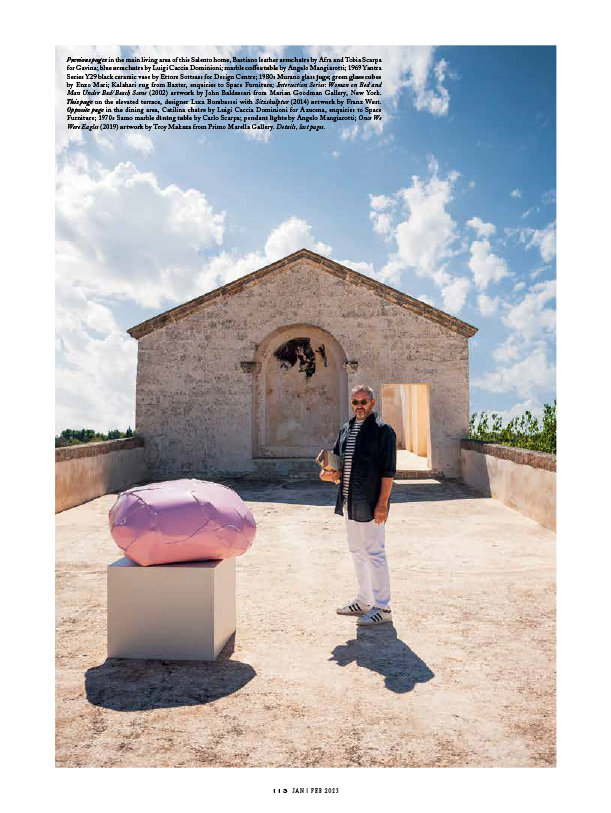


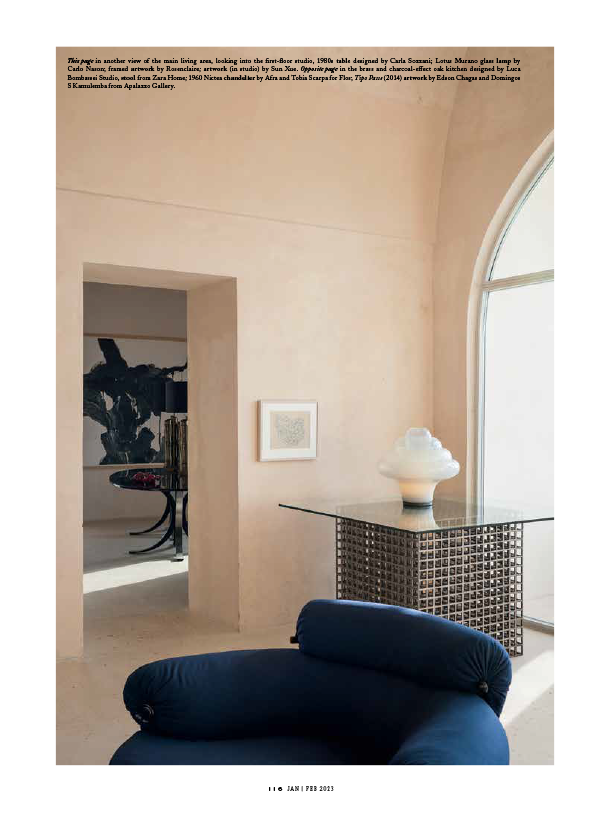
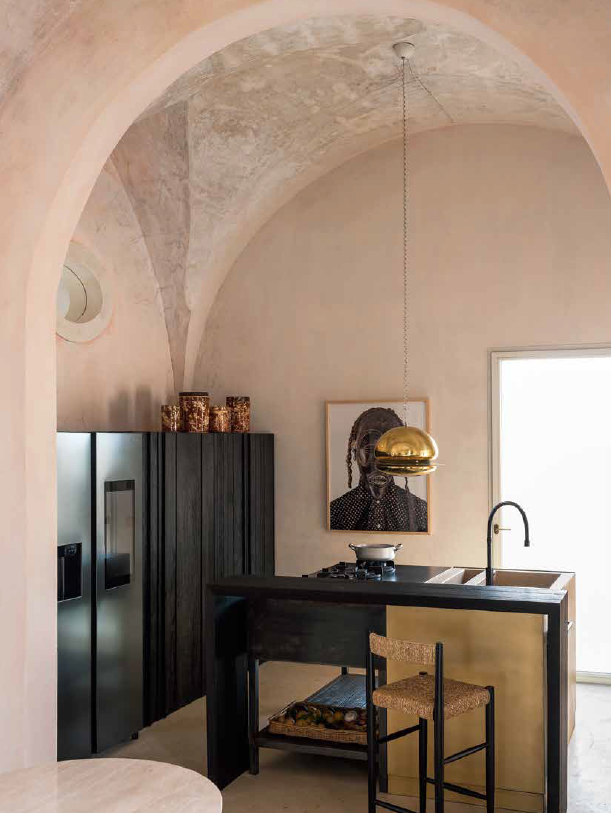
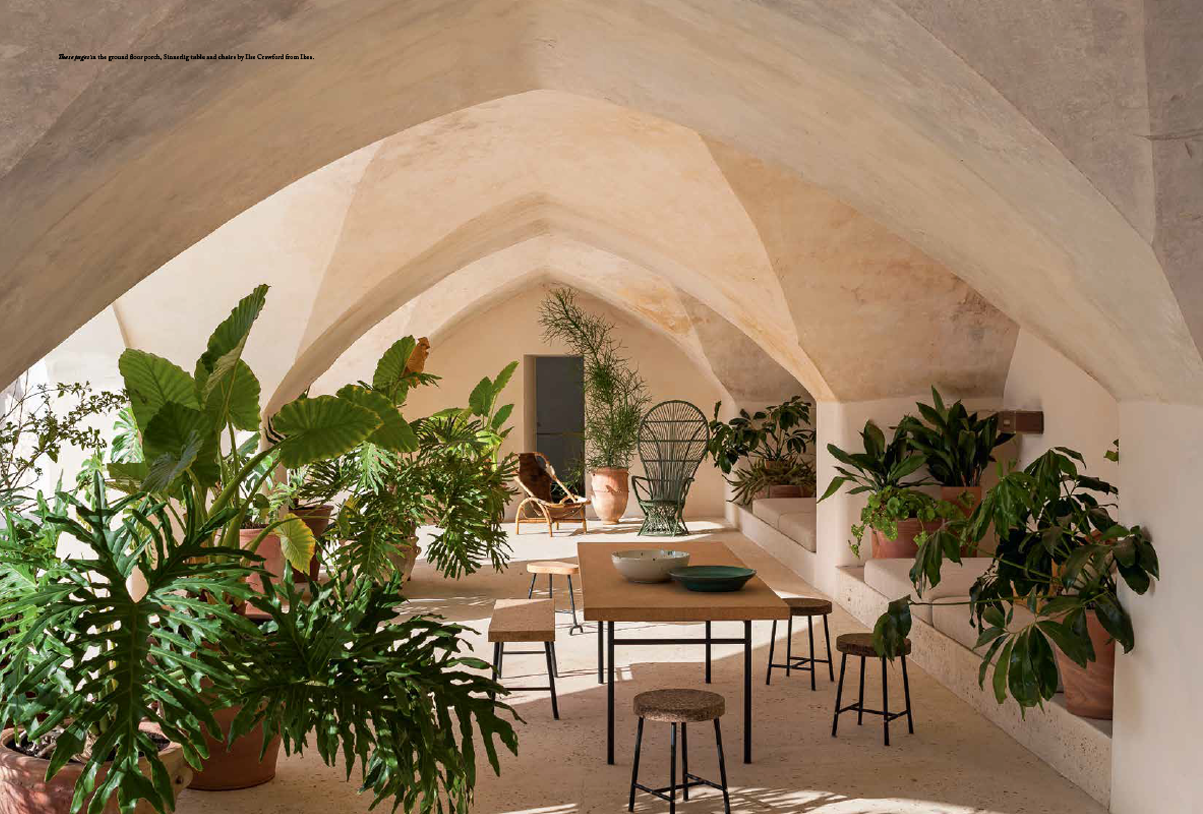
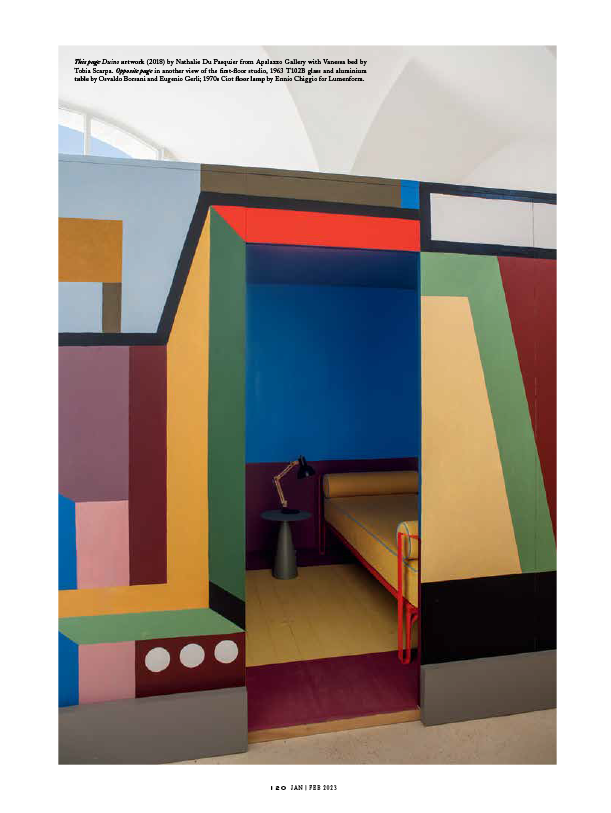
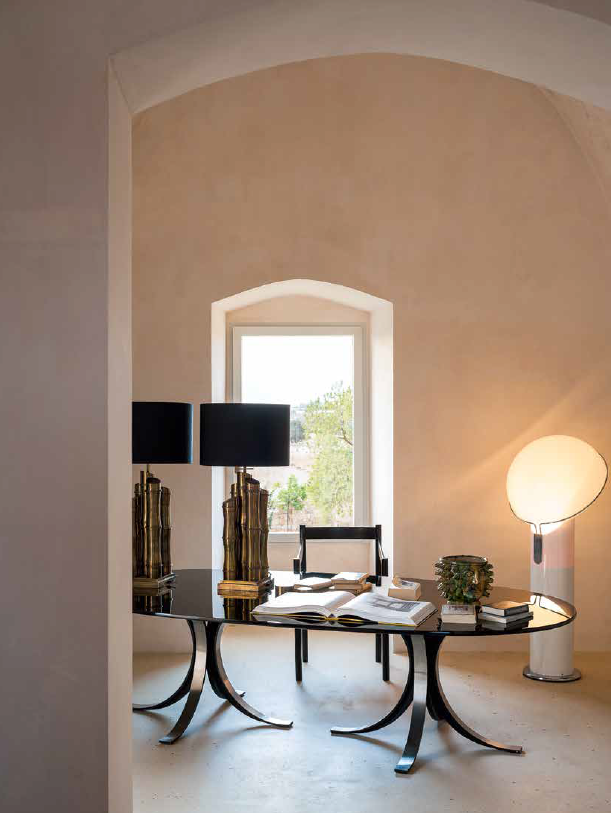
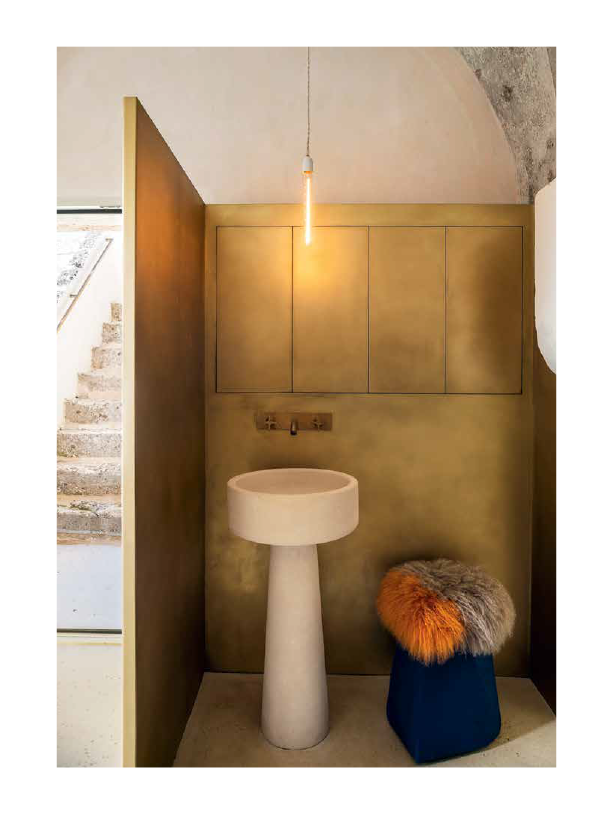
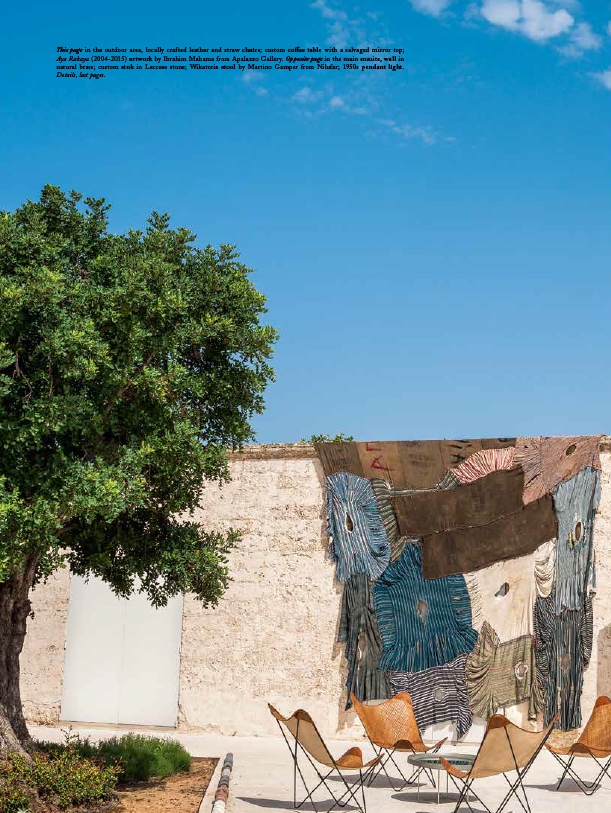
 Luca Bombassei
Luca Bombassei VOGUE LIVING AUSTRALIA: SUMMER SOPHISTICATION INTERIOR STYLE FROM AROUND THE WORLD
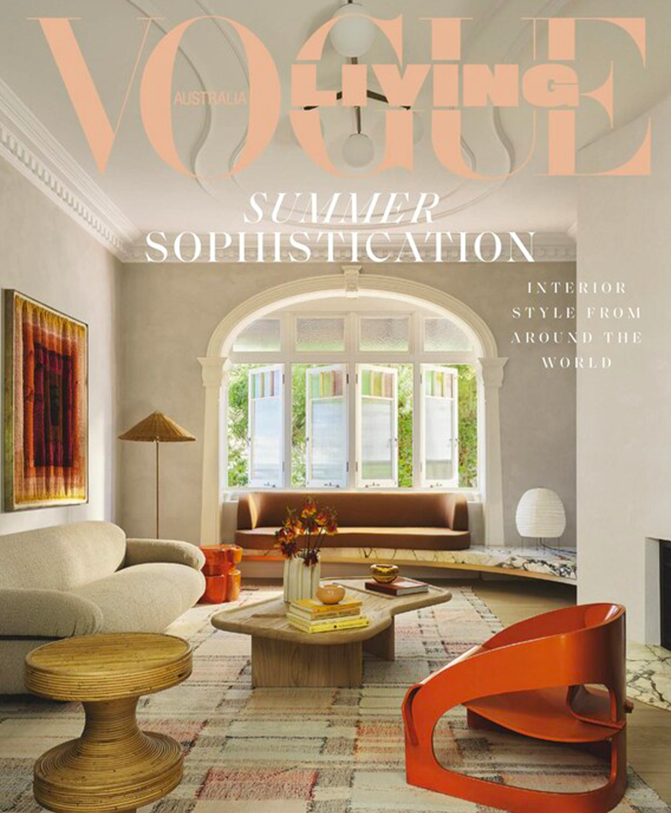
Within the fortified walls of a 16th-century farmhouse, architect Luca Bombassei’s monumental art collection and life’s passion find sanctuary and ceremony.
“The greatest loves are probably the ones that happen by chance, when you don’t expect them,” contemplates architect and entrepreneur Luca Bombassei. The love Bombassei is referring to, in this case, is his relationship with Salento, the southernmost region of Puglia and the land upon which his farmhouse was built in the late 1500s. Salento is grazed by sea on two sides but its soul is the countryside, all olive trees and grassy fields criss-crossed by stone walls so old they too came from this earth. On a visit to the region, by chance, Bombassei was looking for a space for hosting friends, artists and their works. “I don’t have Apulian origins, I just happened down here as a tourist,” says Bombassei, whose two studios are based in and around Milan. “When I found this ancient structure immersed in the countryside, I realised that the building had great potential.”
A fortified masseria comprised of a two-level building with terraces and a central courtyard protected by a wall, the property, Bombassei says, dates back to the 16th century. “Unfortunately, its state of conservation was disastrous, with a series of awful recent interventions that spoiled its original beauty — reinforced concrete stairs, layers with no respect for the historical structure, graffiti sketched onto the plaster, hiding the drawing of the facades,” he laments. Several decorative elements had been stolen, too — the chapel’s altar and original fireplaces once present in each room were no longer there.
The farmhouse’s three-year restoration reflects the work Bombassei does outside the studio: the architect promotes merging artists while simultaneously safeguarding Italian artistic heritage as president of the Venice International Foundation. “I wanted to increase the value of the original architecture with its strength and character, respecting it as much as possible with a maniacal attention,” he says of the restoration, which involved subtracting rather than adding elements to the pre-existing structure. “One of the most exciting aspects of the work was the possibility to get deeply in touch with the local area. I tried to get familiar with the local restoration techniques and ways of cutting stones.”
Porticoed spaces to welcome guests and relax in are located on the ground floor. Shaded by large star vaults, they’re particularly lovely in the summer. In other areas, Bombassei chose not to rebuild portions of the house in order to create open-air rooms. Living areas are connected to a courtyard via arched French doors, but the sense of repose that settles on the retreat comes from beyond its walls. “Outside the house you can contemplate the rows of olive trees, and the intense nature of Salento. This is where you get the real feeling of calm and relaxation,” says Bombassei. “I’m thrilled to take shelter in this beautiful land.”
More than a bucolic weekend abode, this is a large-scale expression of Bombassei’s passion for design and art. “I didn’t want to make this masseria a typical holiday home — I wanted to bring something of my own sensibility, some classical Italian design and contemporary art. I needed to bring my lifestyle with me,” he says. “I was interested in mixing the local architecture with urban elements, bringing furniture inspired by classical Italian design: Sottsass, Scarpa and Mendini. These pieces are not common in a place like this, but they mirror my way of understanding the space.” The masseria is his “nest”, a place that represents who he is, and his art collection is at its heart. “When it comes to art and design, my ideas and choices have an inner coherence, strictly connected to my experiences and taste — they are independent from the world outside,” Bombassei says. “My choices are mostly driven by instinct, or my falling in love with the artwork.” Though he acknowledges the landscape and architecture must be respected in the process, he’s the first to confess “passion and beauty remain my main sources of inspiration”.
The architect has collected art for 20 years, and he suspects something inherent was at play — his father loved to paint but was forced to pursue a different path. As he puts it: “Art is an essential part of my life; it was unavoidable to fill this new home with it.” Bombassei rarely buys pieces knowing where they’ll go, and many of the artworks at the farmhouse had been waiting in his collection until he found the right space. He invited artists to create site-specific works and suggest their placement, and every artwork has deep sentimental value, in particular the installation by Ghanaian artist Ibrahim Mahama. The enormous consideration taken in installing each piece is exemplified in the case of the Swiss artist Olivier Mosset. “Once I chose the artwork, I let Olivier decide where to install it, and he chose the terrace of my masseria,” Bombassei says of this work, which will be identifiable by Google Earth. “All of this rises from the relationship with the artists,” Bombassei gestures. “They can shape the future with no limits.”
By Lindyl Crabb
Photographed by Andrea Ferrari











